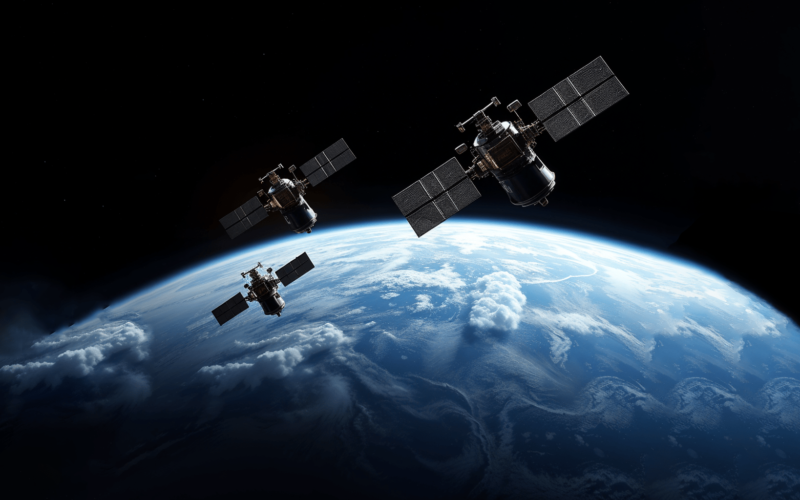Identifying anomalous operations of satellites is more than a technical task. It must depend on human intelligence gathering and advance warning.
Missile launch detection and characterization is a longstanding example of how to overcome similar challenges. It is widely known that the United States operates high altitude satellites that perceive infrared emissions from rocket engines. The Defense Support Program, which operates reconnaissance satellites, has operated for decades. It is to be replaced in due course by the very publicized and more capable Space Based Infrared System. These systems can cover the whole Earth up to about 80 degrees latitude — the horizon from geostationary altitude. Highly elliptical inclined orbits at high altitude were pioneered by Russia to cover higher latitudes most of the time. Molniya orbits hang over high latitudes more than 11 hours, zipping around the bottom in only 30 minutes. Two collaborating satellites can take care of high latitudes all of the time. There are other ways to perceive launches from almost everywhere. We accept that there is global coverage.
But coverage of what? First stage rockets are most bright when they are burning, but burns last minutes at most. The greatest signature is at initiation, but atmospheric attenuation is also greatest, so the period of visibility from first detection to burnout is short. There is much man-made and natural infrared emission from the Earth, so any systems monitoring launches must be able to extract the launch signature from this background. It is easy to miss a launch event, given the short burn in a confusing background.
How do we perceive almost every launch from anywhere when it is so easy to miss many? We use indications and warning; intelligence. In normal times, rocket launches are announced well in advance through Notices to Airmen and Mariners which are issued and understood worldwide. We usually know where and when there will be a launch. We can look in the right place at the right time. Sometimes nations might not make such announcements for reasons of national security. Certainly, launches in anger would not be announced publicly. How would we know where and when to look?
We learn from launch preparations, perceived through surveillance, such as overhead observation and essential communications traffic. We risk missing launches without that intelligence mission.
The CIA excels at this. The well-developed process relies on Targeters to identify and vet sources, Case Officers to and finally Operators to gather the information. This sequence is analogous to the essential precursors of launch detection.
AI can help extract the signature from the noise, but it cannot identify, vet, exploit and capture the rest. People do that, aided by large databases of places, indicators and even people.
We cannot perceive anomalous satellite operations without intelligence. Some satellite maneuvers are announced. Most are not. We must be conversant with who owns, operates and manages virtually all satellites. When we anticipate unannounced maneuvers, we must contact these owners and operators. If that is unproductive, we seek warning from surveillance and communications. The conjunction assessment process is at the far end of this chain.
Just like missile warning, satellite maneuver detection and assessment requires intelligence precursors executed collaboratively with space operations. It is not obvious that the Space Force does this. It appears that we will rely on automated Space Situational Awareness technologies, instead. Hopefully, I am wrong.
David Finkleman was Chief Technical Officer of USSPACECOM and NORAD for nearly 20 years, and was Senior Scientist for the AGI Center for Space Standards and Innovation for a decade. He is an Academician of the International Academy of Astronautics, a Lifetime Fellow of AIAA and elected to Fellowship in numerous professional societies. He is retired from the USAF and the Federal Senior Executive Service. He has been Director of Technology and Systems for Army Ballistic Missile Defense, Deputy Program Manager of Navy Directed Energy Weapons and Chairman of ISO Space Operations Standards. He earned his PhD from MIT and has more than 60 years of aerospace experience.
Related
Source link
lol

